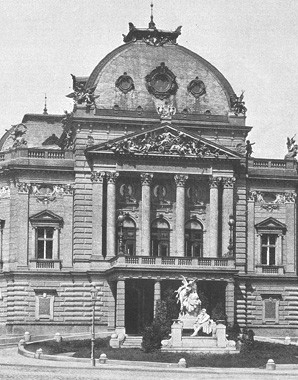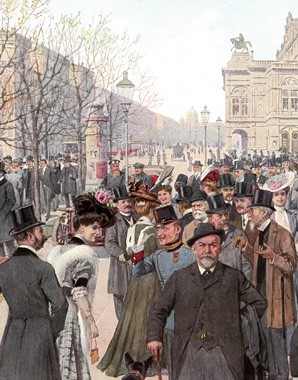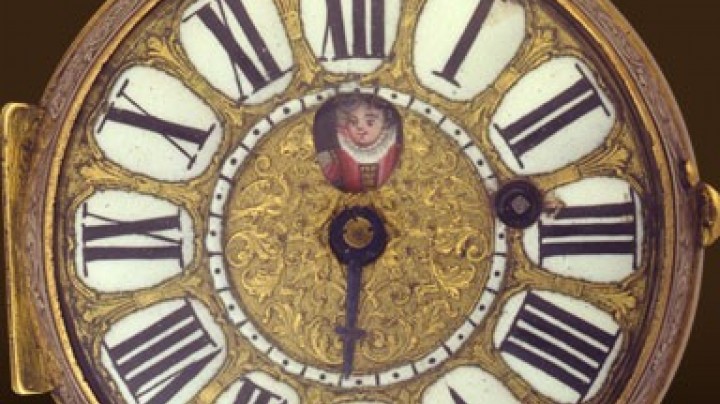The theatre-makers
The professional theatre architects Fellner and Helmer had designed and supervised the construction of almost fifty theatres at various locations in the Monarchy since the 1880s – now they were drawing up plans for a new home for the German Volksstück in the immediate vicinity of the Ringstrasse.
Quoted from Götz, Thomas: ‘Die Theatermacher’, in: Parnass 16 (1996)We were never primarily concerned with creating works of architecture with these auditoria, but rather endeavoured to develop the space to be functional and attractive, and to present the audience, the best and finest decoration of each auditorium, to its best advantage; it was only at this stage that we attempted to give this basic setting an architectural design
The architects Ferdinand Fellner (1847–1916) and Hermann Helmer (1849–1919) had established a proper theatre construction business and were experts in acoustics and fire protection. Their offices employed up to 35 draughtsmen, and the buildings were all designed to a standardized layout. The patrons who commissioned the new theatres were no longer the nobility or the ruling dynasty but the middle classes, who wanted to display their standing through the theatre, together with public authorities.
The Laube Verein (a society named after the theatre manager Heinrich Laube) wished to establish a ‘German theatre with very inexpensive admission’ in Vienna with a repertoire of popular dramas as well as the classics and superior comedy. Emperor Franz Joseph supported the idea of a theatre for the people, albeit not its funding. The actor Alexander Girardi (1850–1918) commented wryly: ‘Der Kaiser gab den Platz, der Bürger seinen Schatz’ (The Emperor gave the site, the citizen his fortune).
The Deutsches Volkstheater planned by Fellner and Helmer was conceived as a counter-project to the Burgtheater on the Ringstrasse, of which the pair were vehement critics. They had little interest in showy pomp and were mainly concerned with the functionality of the building. It was designed with the needs of the audience in mind: a good view of the stage and good acoustics should be guaranteed for every member of the audience. Ferdinand Fellner emphasized the democratic element of is buildings: he wanted ‘not as before to privilege the propertied classes but resolutely to provide for the great mass of the public’. This was achieved by reducing the number of boxes and increasing the amount of normal seating, which was made by the Thonet Bros. furniture company. The question of style was at the bottom of their list for consideration.
And yet there were victims of aesthetic considerations: the costume workshop was originally accommodated on the first basement floor, which meant that the seamstresses had only very limited daylight to work by. Helmer is alleged to have given the following reason for this unfortunate state of affairs: ‘I’m not going to ruin the façade for that poxy little workshop’. The theatre was completed after only a short period of construction and opened on 14 September 1889 with Ludwig Anzengruber’s play Der Fleck auf der Ehr. The Volkstheater stood for progressive theatre and attracted audiences both from the wealthy middle class and the better-paid working class.



















